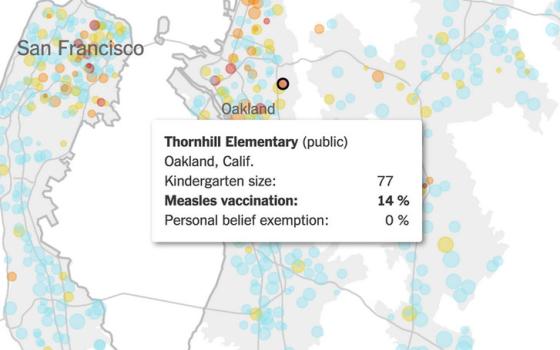If you paid any attention to U.S. news last week, you’re probably well aware that there’s a measles outbreak on the West Coast. The outbreak started in California, where – as of Monday – there were at least 123 reported cases of the measles in California, and according to the Los Angeles Times, the disease has now spread to seven other U.S. states and Mexico.
The U.S. eradicated measles in the country 15 years ago, and yet California is seeing a 20-year high in reported cases. Seemingly at fault is a recent pushback in the U.S. against doctor-recommended vaccinations, possibly because California is one of the national leaders in the anti-vaccination movement – a relatively recent phenomenon in which parents claim religious exemption from doctor-recommended immunizations for children. In fact, more than 2,700 California kindergartners have vaccine exemptions based on their parents’ religious beliefs.
And yet, the World Health Organization says vaccines are a crucial part of healthcare. According to their research:
- Immunizations prevent about 3 million deaths each year. They say vaccinations are one of the most successful and cost-effective means of preventing deaths from diphtheria, tetanus, whooping cough and – yes – the measles.
- Thanks to vaccines, the measles mortality rate has declined by 74 percent in the last decade.
- Vaccines are also responsible for decreased reported cases of polio by 99 percent in 22 years. Only three countries still see cases of polio: Afghanistan, Pakistan and Nigeria.
More than 25 percent of California schools are below the CDC’s recommended measles immunization rate for kindergartners. (They’d like anywhere from 92 to 94 percent of children vaccinated.) This interactive map from the New York Times shows the measles vaccination rate for every kindergarten in California.

